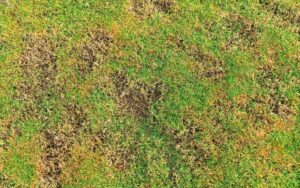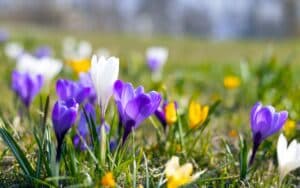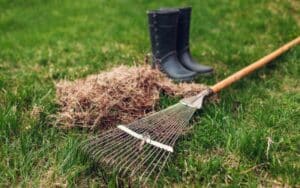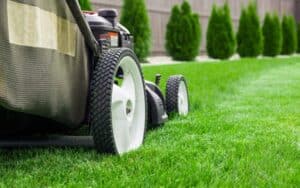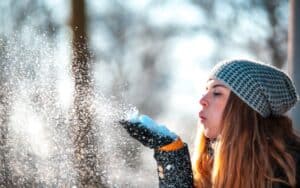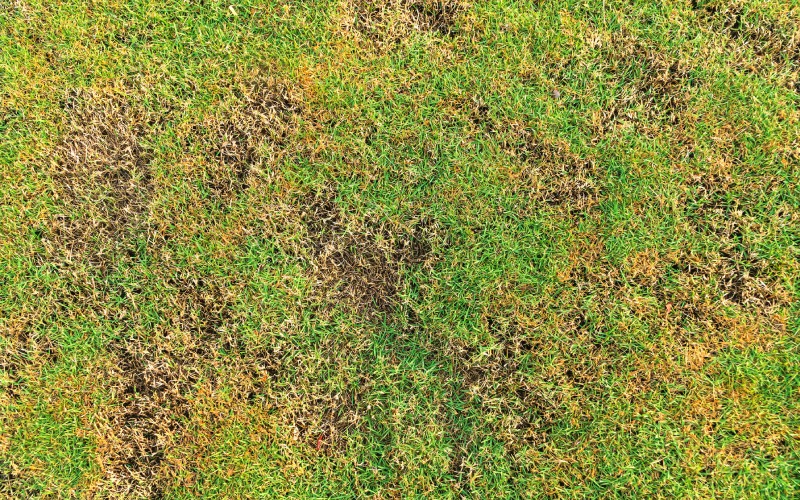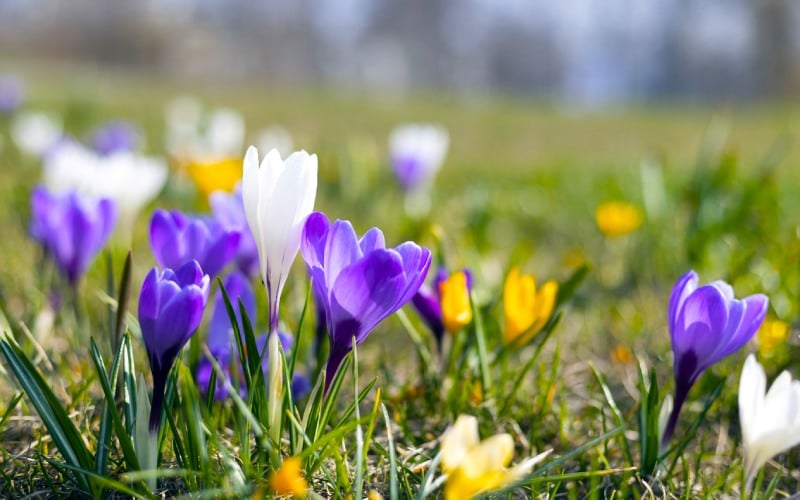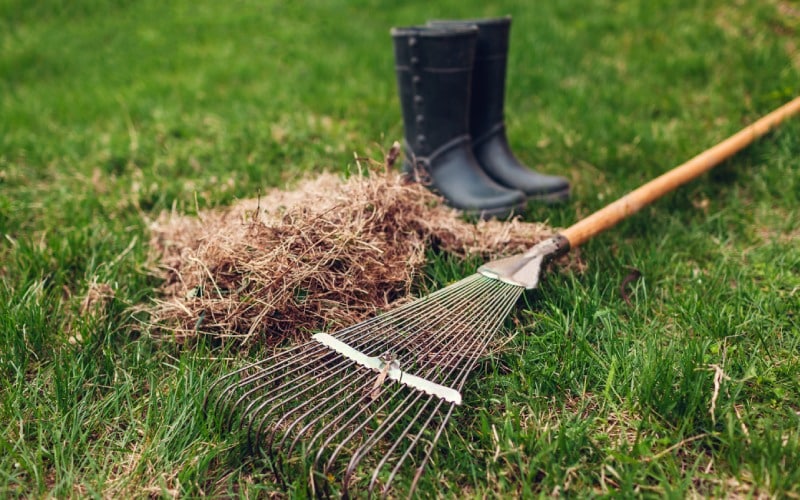Ever looked out your window to a lawn filled with brown patches, mole hills, or even worse, a weed invasion? Your heart sinks as you realize your once lush, green oasis needs some serious first aid. But don’t despair, repairing a damaged lawn isn’t as daunting as it might seem.
From heavy foot traffic to pesky insect pests and harsh environmental stresses, lawns can suffer damage from a myriad of sources. But with the right tools and techniques, you can restore your lawn’s health and vibrancy. Whether it’s reseeding bare patches or correcting improper mowing practices, we’re here to guide you through the process with speed and efficiency.
Understanding Lawn Damage
Understanding the complexities of lawn damage relates more than just noticing brown patches or bare spots in your turf. It’s about comprehending the underlying causes and learning to identify the types.
Common Causes of Lawn Damage
Lawns can bear scars from numerous perpetrators. High foot traffic, pet urine, insect attacks, certain diseases, and even inappropriate maintenance activities—think mowing, watering, or fertilizing practices—can negatively impact your green oasis. Also, even Mother Nature plays a part; environmental stressors such as drought, heat, and cold can wreak havoc on lawns. Prime symptoms of lawn damage include thinning grass, brown or bare patches, discolouration, and, worst of all, weed invasion.
Consider the impact of winter salt: Harsh chemical runoff from sidewalks, driveways, and walkways can progressively burn your turf and vegetation over time, causing grave lawn damage over winter’s course.
There’s the infamous damage from pesky tree roots too. As these roots grow and thicken, they can force up the lawn surface or even expose themselves. If untreated, it can significantly mar your lawn over time.
Identifying Types of Lawn Damage
Identification is the first step on the path to renewal. Take bugs, for instance. Insects, rodents, and birds can cause significant damage to even the healthiest patches of grass. Beetle larvae, especially grubs, can infest the soil beneath the surface, damaging grass at the roots and causing unsightly brown blotches on the grass.
Imagine quarters competing for a slot. This same competition happens right beneath your feet—between your grass and the weed population. These plant invaders can choke out healthy seeds and take control of your lawn’s territory.
Then, there’s thatch. It’s a type of build-up that occurs when a mower fails to finely chop grass clippings, or when excessive clippings accumulate over time. Large layers of thatch can suffocate your grass roots and prevent water and fertilizer from enriching your lawn.
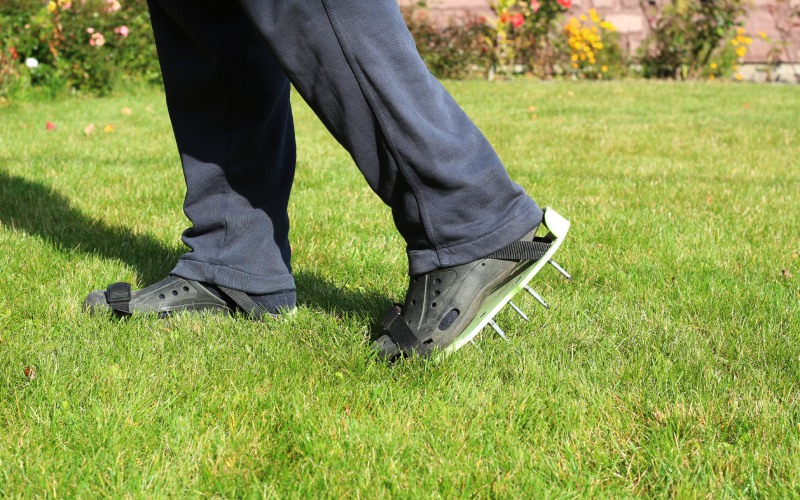
Tools and Materials Needed for Lawn Repair
You’d find a variety of tools instrumental in dealing with and repairing lawn damage. Let’s discuss different aspects of lawn repair and the specific tools required for each function.
Verticutter: Rescuing a Thatch-Plagued Lawn
A lawn choked with excessive thatch and weeds could certainly benefit from verticutting. Verticutter equipment efficiently removes layers of thatch and weeds, enhancing lawn growth. Regular use promotes lawn health, optimizing it for recovery.
Top Dresser: Filling Holes and Evening Out the Surface
Whether brought about by wildlife or weather, holes in your lawn present an issue. That’s where a top dresser comes in. Distributing a thin layer of material across your field, it swiftly fills in these gaps, making manual hand reseeding a thing of the past.
Aerator: Breathing Life Into Ailing Lawns
Brown, wilting patches of grass sound a distress signal for your lawn. An aerator tool could be the lifejacket they need. Making holes in the ground allows soil to breathe and channels essential elements – water, air, and nutrients to the roots.
Sod Cutter and Shovels: Extricating Damaged Sod
Repairing larger damages often involve uprooting the injured patches of sod. Jaw-like sod cutters and straight-edged shovels help this, loosening the sod from the soil for repositioning later.
Rotary Tiller: Wrestling with Hardened Soil
Compacted soil impedes successful lawn restoration, a problem a rotary tiller solves. This tool breaks up and loosens hardened soil, making it pliable for further steps of repair, be it adding new sod or reseeding.
Steps to Repair Lawn Damage
Diagnosing the Lawn Problem
Before you jump headlong into yard repairs, it’s crucial to analyze your lawn thoroughly and identify the source of the problem. It could range from pests, heavy foot traffic to inappropriate mowing practices or excess fertilizer use. Salt damage or pet urine could be other possible culprits. Familiarize yourself with the signs of these problems such as thinning grass, discolouration, or weed domination. Accurate problem diagnosis provides a fitting solution, reducing blind effort, and saving time.
Removing Dead Turf and Replacing Hardened Soil
Next, armed with your handy straight-blade shovel, remove dead or damaged turf, making sure to discard any remaining debris. Using the rotary tiller, agitate the hardened soil until it breaks down. This process triggers soil regeneration, encouraging a vibrant grass recovery. The presence of other lawn obstructions necessitates proper concealment to foster uniform lawn growth.
Initial Preparation: Mowing and Raking
Starting on the path to recovery, begin with a thorough mowing to trim lawn height. Rake the lawn to eliminate dead grass and promote air flow. This process allows for proper seed-to-soil contact, a necessity for successful grass growth.
Aerating the Lawn
Guaranteeing soil health optimizes regeneration. Perform lawn aeration to loosen compressed soil. This enhances air, water and nutrient circulation, integral to the lawn’s health and vitality.
Seeding the Lawn
Proceed to lay new grass seeds, targeting 10 to 20 seeds per square inch. Pressing the seed firmly into the prepared soil ensures effective germination. Remember to use a grass variety that complements your existing lawn and adapts to climatic conditions.
Watering Your New Lawn
After seeding, water your lawn lightly yet frequently. Keep a keen eye on moisture levels, especially for newly germinated seeds. Aim for 1-1.5 inches of accumulated water weekly to sustain deep root growth.
Feeding and Fertilizing Your Lawn Regularly
Finally, a regular feeding and fertilizing schedule solidifies your lawn care efforts. Balance your fertilizer use to prevent compounding lawn damage. Precision and consistency are pivotal, promoting a thick, healthy lawn that can out-compete weeds. Carry out proper mowing techniques to prevent grass scalping, fostering a lush, resilient lawn.
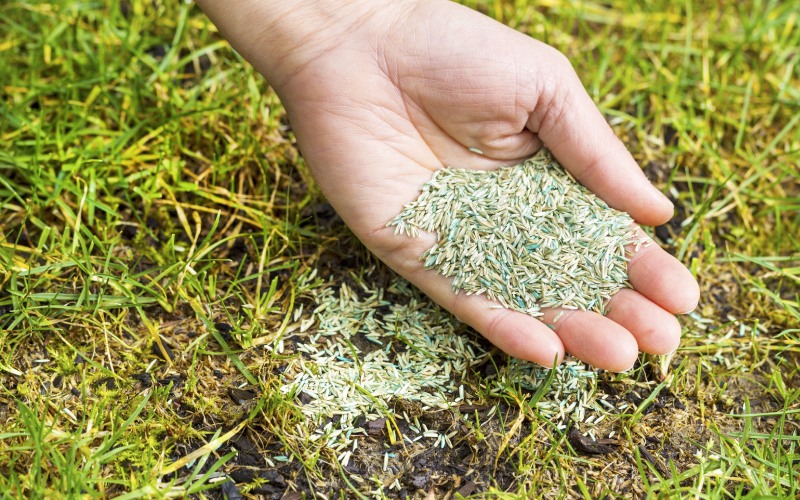
Special Considerations in Lawn Repair
Repairing High Traffic Damage
High traffic can compact your soil, disrupting its structure, reducing air pockets, and impeding water and nutrient penetration. This results in weakened, yellowing grass more prone to disease and pests. First loosen the soil using a rotary tiller, particularly in the previously compacted tire ruts. Follow this with a meticulous raking to level and smoothen the surface. Set back the removed sod pieces, ensuring they connect seamlessly. Finally, water the repaired area adequately. This routine not only rejuvenates damaged grass but also fosters stronger root systems, primed for growth.
Repairing Lawn Under a Structure
Maybe you’re dealing with damage after removing a semi-permanent structure or high-traffic apparatus, such as a swing set or trampoline. Extend your care strategy to these areas. First, eliminate any remnants – gravel, rocks, stone dust, and other debris. Next, pour a generous mixture of topsoil and compost. Proceed to till this blend, making sure it integrates well with the existing soil. Smooth and level the area with a rake. Finally, spread grass seeds, cover with topsoil or straw, and water well. This helps prevent wind or run-off from washing away the newly sown seeds, ensuring successful germination and overall lawn revival.
Dealing with Pests and Diseases
Lawn damage can stem from pest infestations or disease. These conditions create brown patches, thinning grass, or discolouration. Repairing this type of damage means identifying the specific culprits and undertaking tailored remedial activities. Typically, corrective measures include application of suitable herbicides or pesticides, and sometimes, reseeding or laying new sod might be necessary.
Managing Dog Urine and Salt Damage
Finally, dog urine or salts can pose significant threats to your lawn. These substances create high pH or salinity levels detrimental to your grass. In such cases, frequent, deep watering proves essential. Aim for 1-1.5 inches of water weekly. This not only keeps your lawn adequately hydrated but also helps flush out excess salts or harmful substances, restoring pH balance. Remember, every lawn is unique, and understanding your specific condition is the first step towards effective repair and maintenance.
Maintaining Your Restored Lawn
Regular lawn mowing, with high-set blades, promotes healthy, deep-rooted grass that resists weeds. Keep mower blades sharp to avoid damaging the grass. Water deeply yet infrequently, about 1 – 1.5 inches weekly, tailored to local climate and grass type, which enhances grass resilience. Vigilantly monitor for pests, diseases, and weeds, treating promptly with suitable methods. Regular observation and maintenance are key to preventing major issues. Riverwood Landscape of Guelph specializes in servicing commercial properties, ensuring your grass remains beautiful and healthy.







